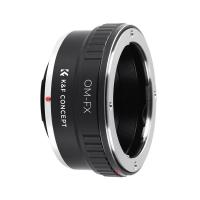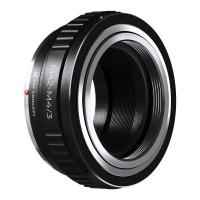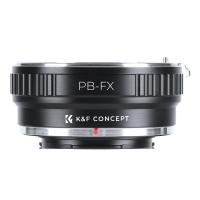What Are The Magnifications On A Microscope ?
The magnifications on a microscope typically range from 40x to 1000x or higher.
1、 Total magnification
Total magnification refers to the overall level of enlargement achieved when using a microscope. It is determined by multiplying the magnification of the objective lens by the magnification of the eyepiece. The magnification power of a microscope is crucial in allowing scientists, researchers, and students to observe and study tiny structures and organisms that are otherwise invisible to the naked eye.
Microscopes come in various types, including compound microscopes, stereo microscopes, and electron microscopes, each with different magnification capabilities. Compound microscopes, commonly used in laboratories and educational settings, typically have objective lenses with magnifications ranging from 4x to 100x, and eyepieces with magnifications of 10x or 20x. Therefore, the total magnification can range from 40x (4x objective lens multiplied by 10x eyepiece) to 2000x (100x objective lens multiplied by 20x eyepiece).
It is important to note that the total magnification is not the only factor determining the quality of the image observed. The resolution, or the ability to distinguish between two closely spaced objects, is also crucial. Higher magnification does not necessarily mean better resolution. In fact, increasing magnification beyond a certain point can lead to a decrease in image quality due to limitations in the microscope's optics.
Advancements in technology have allowed for the development of more powerful microscopes with higher magnification capabilities. For example, modern electron microscopes can achieve magnifications of up to several million times. These microscopes use a beam of electrons instead of light to visualize specimens, providing extremely detailed images at the nanoscale level.
In conclusion, the magnification on a microscope refers to the level of enlargement achieved, and the total magnification is determined by multiplying the magnification of the objective lens by the magnification of the eyepiece. The range of magnifications varies depending on the type of microscope used, with compound microscopes typically offering total magnifications from 40x to 2000x. However, it is important to consider factors such as resolution and image quality alongside magnification when choosing the appropriate microscope for a specific application.

2、 Objective lens magnification
The magnification on a microscope refers to the degree to which an object is enlarged when viewed through the microscope. There are two main types of magnification on a microscope: the objective lens magnification and the eyepiece lens magnification.
Objective lens magnification is determined by the objective lenses, which are located on the lower end of the microscope. These lenses are available in various magnification powers, typically ranging from 4x to 100x. The magnification power of the objective lens is usually indicated by a number followed by an "x" (e.g., 10x, 40x, etc.). This number represents how many times larger the object will appear when viewed through that particular objective lens.
The total magnification of an object on a microscope is calculated by multiplying the magnification of the objective lens by the magnification of the eyepiece lens. For example, if the objective lens has a magnification of 40x and the eyepiece lens has a magnification of 10x, the total magnification would be 400x.
It is important to note that the maximum achievable magnification on a light microscope is limited by the wavelength of light. According to the Abbe limit, the maximum resolution of a light microscope is approximately 0.2 micrometers. Therefore, magnifications beyond a certain point may not provide any additional useful information and may result in a loss of image quality.
In recent years, advancements in technology have led to the development of more powerful microscopes, such as electron microscopes, which can achieve much higher magnifications. Electron microscopes use a beam of electrons instead of light, allowing for much higher resolution and magnification. These microscopes can magnify objects up to several million times, revealing intricate details at the atomic level.
In conclusion, the magnification on a microscope is primarily determined by the objective lens magnification. The total magnification is calculated by multiplying the magnification of the objective lens by the magnification of the eyepiece lens. While light microscopes have limitations in terms of maximum achievable magnification, advancements in technology have led to the development of more powerful microscopes with higher magnification capabilities.

3、 Eyepiece lens magnification
The magnification on a microscope refers to the degree to which an object appears larger when viewed through the microscope compared to the naked eye. There are two main components that contribute to the overall magnification: the eyepiece lens and the objective lens.
The eyepiece lens, also known as the ocular lens, is located at the top of the microscope and is the lens through which the viewer looks. It typically has a magnification power of 10x. This means that when looking through the eyepiece lens, the object being observed will appear 10 times larger than it would to the naked eye. However, it is important to note that the eyepiece lens alone does not determine the total magnification of the microscope.
The objective lens, on the other hand, is located at the bottom of the microscope and is responsible for gathering light and magnifying the image of the specimen. Microscopes usually have multiple objective lenses with different magnification powers, such as 4x, 10x, 40x, and 100x. These objective lenses can be rotated into position depending on the desired level of magnification. When combined with the eyepiece lens, the total magnification is calculated by multiplying the magnification of the eyepiece lens by the magnification of the objective lens in use.
For example, if the eyepiece lens has a magnification of 10x and the objective lens in use has a magnification of 40x, the total magnification would be 10x multiplied by 40x, resulting in a total magnification of 400x.
It is worth mentioning that advancements in technology have led to the development of more powerful microscopes with higher magnification capabilities. Some modern microscopes can achieve magnifications of up to 2000x or even higher. These high magnification microscopes are often used in specialized fields such as medical research, biology, and materials science.
In conclusion, the magnification on a microscope is determined by the combination of the eyepiece lens and the objective lens. The eyepiece lens typically has a magnification of 10x, while the objective lens can vary in magnification power. The total magnification is calculated by multiplying the magnification of the eyepiece lens by the magnification of the objective lens in use.

4、 Numerical aperture
The magnification on a microscope refers to the degree to which an object is enlarged when viewed through the microscope. It is a crucial factor in microscopy as it determines the level of detail and resolution that can be observed. However, it is important to note that magnification is not solely determined by the microscope itself, but also by the combination of the objective lens and the eyepiece.
The numerical aperture (NA) is a key parameter that influences the magnification of a microscope. It is a measure of the light-gathering ability and resolving power of the objective lens. The NA is determined by the design of the lens and is typically indicated on the lens itself. A higher numerical aperture generally results in a higher magnification and better resolution.
The magnification of a microscope is calculated by multiplying the magnification of the objective lens by the magnification of the eyepiece. For example, if the objective lens has a magnification of 10x and the eyepiece has a magnification of 20x, the total magnification would be 200x (10x * 20x).
It is worth mentioning that the maximum achievable magnification of a microscope is limited by factors such as the numerical aperture, the quality of the lenses, and the wavelength of light used. In recent years, advancements in technology have allowed for the development of high numerical aperture lenses and the use of techniques such as super-resolution microscopy, which can push the limits of magnification and resolution even further.
In conclusion, the magnification on a microscope is determined by the combination of the objective lens and the eyepiece. The numerical aperture of the objective lens plays a crucial role in determining the magnification and resolution of the microscope. Advancements in technology continue to push the boundaries of magnification and resolution in microscopy, allowing for more detailed and precise observations.








































